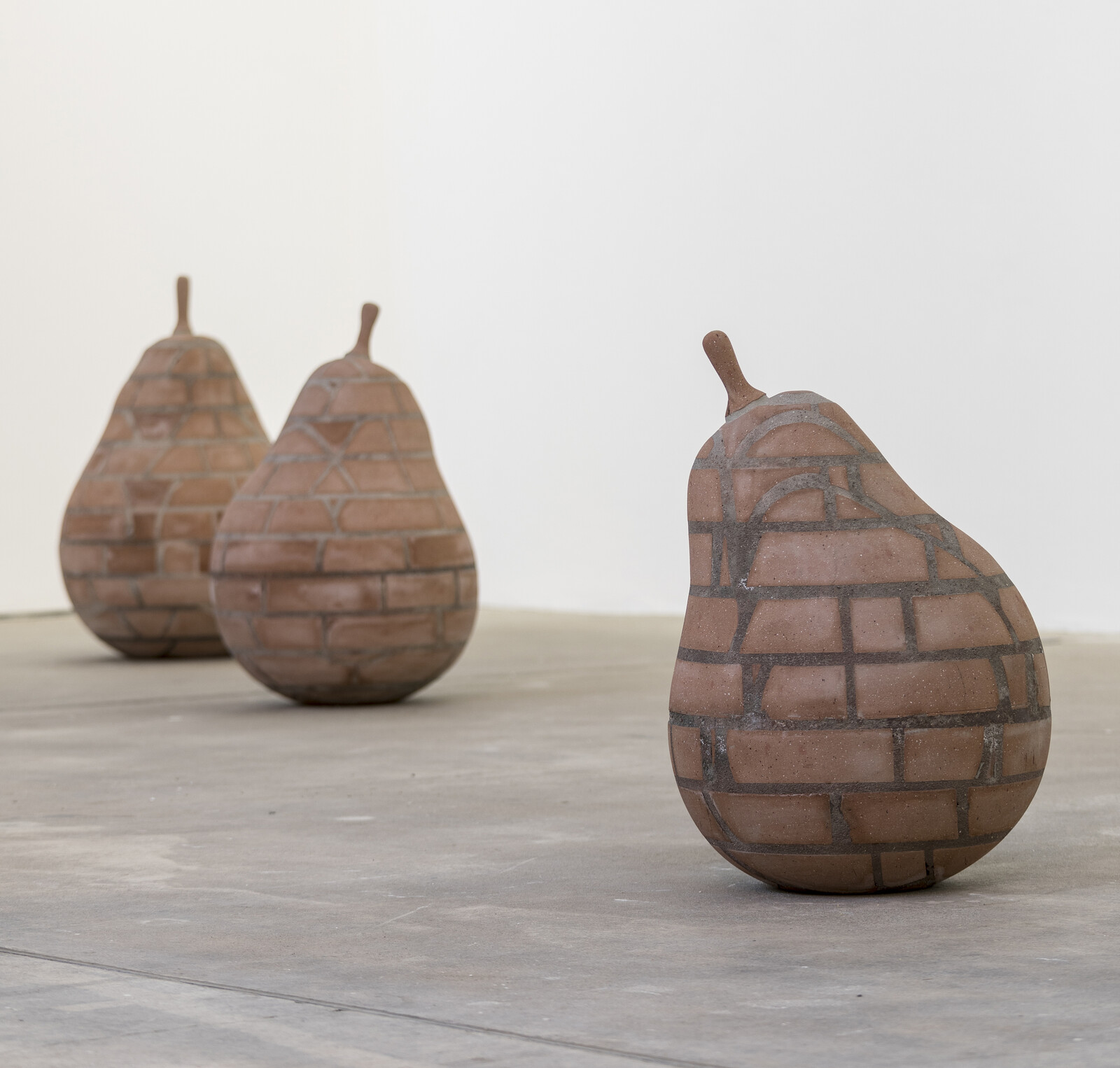OUT
May 10–December 30, 2018
Sølvgade 48-50
DK-1307 Copenhagen
Denmark
Hours: Tuesday–Sunday 10am–6pm,
Wednesday 10am–8pm
T +45 33 74 84 94
smk@smk.dk
How do everyday objects, architecture and technology affect the human body, human behaviour and inter-human relationships? Berlin-based artist Judith Hopf explores these issues in art where humour is also a main factor. “Art shouldn’t be too serious,” she says. Judith Hopf’s works are on display at SMK - National Gallery of Denmark from May 10.
Giant pears have been carved out of solid cubes built out of red bricks. The inherently illogical nature of producing pear-shaped sculptures out of square bricks is typical of the artist Judith Hopf (b. 1969). By having such easily bruised, perishable fruits shaped out of solid, durable bricks and scaling up the almost cartoonish pear shapes to form monumental sculptures, Hopf challenges our habitual views of the world.
Hopf often employs humour in her works, injecting it as a disarming factor within the overall critical reflections typical of her practice. Things are rarely as simple as you might think. And this also applies to the title of her exhibition at SMK: OUT.
Walking architecture
“‘Out’ is an interesting word because it can have positive or negative connotations. On the one hand, being deemed ‘out’ would be horrific within the world of fashion—and this applies within the world of art, too. No-one wants to be ‘out’! On the other hand, if you don’t ‘come out’ in terms of your political ideas or sexual preferences, you won’t feel free and fulfilled as a human being. So there’s also a very positive side to the term ‘out,’” explains Judith Hopf.
She is interested in the marginalised, in what falls outside the norm, in what is situated on the peripheries. From this outsider position, her works challenge what is expected, habitual and conformist.
The exhibition includes the video work bearing the same name: OUT. In this video, Hopf makes a reference to the American architect John Hejduk. In the 1980s, Hejduk proposed the construction of a new neighbourhood along Friedrichstrasse on the western side of the Berlin Wall: Berlin Masque. The project was never realised, but in 1988 Hejduk had a fragment of the original plan built in the Kreuzberg area of the city in the form of the distinctive postmodernist building complex known as the Kreuzberg Tower and Wings.
The facades of the two side wings look like faces or masks: the windows are eyes lidded by awnings. At first, we are led to believe that Hopf filmed the actual building in Berlin. But when the house is seen to move in a later sequence, it turns out to be a scaled-down mock-up worn like a costume: the person inside lifts up the house and walks out of the picture. Here, Hopf puts an added spin on her original source of inspiration, but like Hejduk, she is keenly interested in the urban space as a living organism that affects and regulates our sense of community.
When man and technology merge
Made of bent sheet metal, the sculpture series Untitled (Laptop Men) emanate industrial functionality and at first glance appear to point towards the minimalist sculptures of the 1960s, which favoured industrially manufactured materials and non-figurative forms.
Hopf’s sculptures resemble their abstract predecessors, but closer inspection reveals that her sculptures actually depict seated, standing and reclining human figures that have merged with laptops propped onto their bellies, chests or knees.
Hopf takes an inquiring and critical look at the impact that technology has on the human body—for example at how laptops have almost become prosthetic extensions of the body, rendering us dependent on them. What does this do to individual human beings, and how has it affected our interaction with each other?
The exhibition Judith Hopf: OUT was produced in co-operation with KW Institute for Contemporary Art, Berlin.



